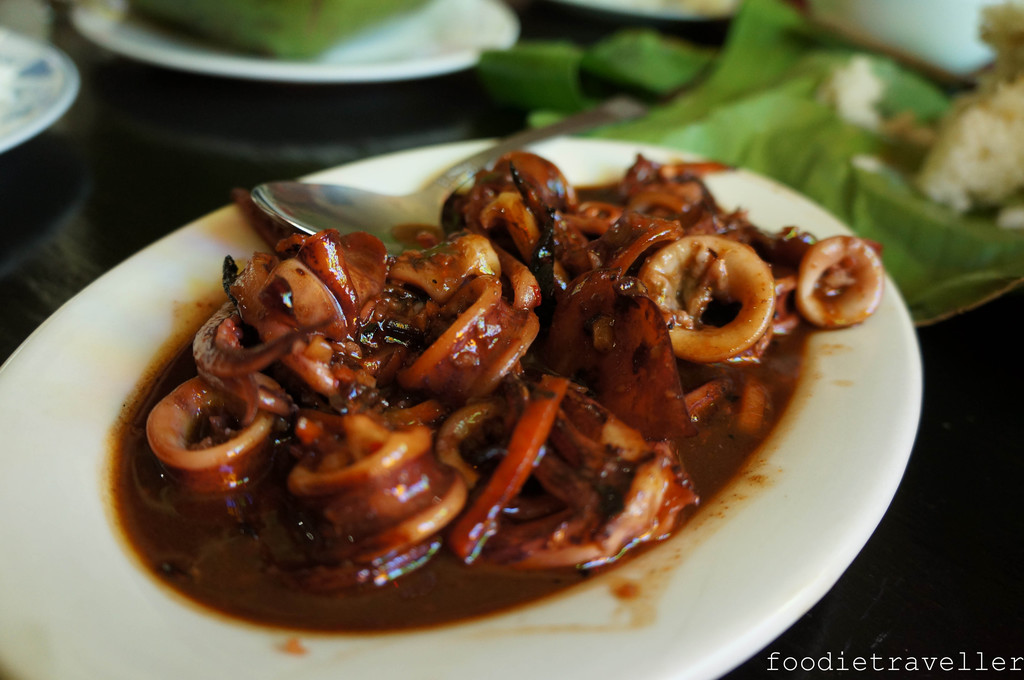Chicken Adobo (adobong manok)
Today I want to tell you about a dish I grew up with and which has always been a favourite in our kitchen: Chicken Adobo or adobong manok in tagalog (the language of the philippines).
Considering how much it is known, cooked and eaten in many and various occasions, this dish could well be labeled as the national dish of the Philippines.
The term "adobo" originates from Spain, but the dish itself is very different from the "spanish adobo": the latter in fact refers to marinated dishes, whereas the philippine term indicates mostly a specific "local" cooking method. When spanish people arrived in the Philippines they met the local population, which were already in the habit of marinating meat in vinegar to preserve it in time and concentrate flavors, and from this very meeting the spanish named it adobo, from the spanish verb "adobar" which means in fact "to marinate".
You can find numerous recipes for this dish on the internet, but the majority of them don't even reproduce the original recipe, let alone the one I'm used to having.
Let's see the few, simple ingredients that are needed to make this delicious dish.

Ingredients
- 1kg (2 pounds) of chicken cut in pieces of the size you prefer
- 3 dry bay leaves, or more if you want more flavor/aroma
- 4 tablespoons of soy sauce
- 2 tablespoons of vinegar
- 3 cloves of garlic, minced
- 2 pieces of ginger, minced
- half an onion, sliced
- 250-500 ml of water
- a drizzle of oil
- half a tablespoon of sugar
- black pepper in grains, to taste
Preparing this dish is so easy you can do it as ral philippines do it! I am sure the smell emanating from it will immediately leave your mouth watering, and it will become one of those recipes you repeat thousands of times!
Step by step for an exquisite adobo
- In a bowl marinade the chicken with the soy sauce, onion and pepper. Cover and let it rest for at least 3 hours, the longer you marinate it, the tastier the chicken will be.
- In a pan heat up some oil, and roast the ginger and garlic. When they become golden add the chicken, and cook for a few minutes on medium heat, making sure you cook all sides.
- Add the marinade and the water and bring to a boil.
- When it reaches a boil add the bay leaves, reduce the heat to low, put the lid on and let it cook for 30 minutes or until the chicken is tender. Stir it every once in a while to prevent the chicken from sticking to the pan.
- At this point add the vinegar, stir everything together and leave it on low for 10 more minutes.
- Add the sugar and turn the heat off.
- Serve it up with a nice side of white rice.
Tips and curiosities
As you have seen, preparing this delicious "ulam" isn't difficult at all; in italian cuisine this would probably be called a side dish as it comes with white rice, but I think the term second course does it more justice. Philippine dishes are always made up of ulam and white rice. So while you're following the step by step recipe, don't forget to also cook the rice!
This recipe isn't limited to chicken, as it is possible to substitute any kind of meat, and even vegetables or fish, and still use the exact same method. For example, my mother loves to cook cuttlefish like this, adding in a few tomatoes, which is an "adobong pusit" in tagalog. It sounds like something rare and dubious, but I assure you, if you liked chicken adobo, you will like cuttlefish adobo even more!

For this dish we generally use cane vinegar or rice vinegar, but any kind of vinegar you have in the pantry will work perfectly. You can also add some fresh chili to make it more versatile and - obviously - spicy. If you do so, add it in just before turning your heat off.
Photo gallery
Content available in other languages
- Italiano: Adobo di pollo (adobong manok)
- Español: Pollo en adobo (adobong manok)
Want to have your own Erasmus blog?
If you are experiencing living abroad, you're an avid traveller or want to promote the city where you live... create your own blog and share your adventures!
I want to create my Erasmus blog! →





Comments (0 comments)